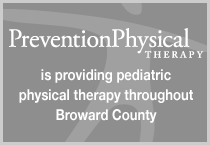
NEURODEVELOPMENTAL TREATMENT
Neurodevelopmental treatment (NDT) was developed by the Bobaths in the beginining of the 1940's. This approach has been at the forefront of pediatric treatment since this time period. This is an excellent definition of the NDT approach which is followed by Prevention Physical Therapy's therapists:
"The NDT approach is not a set of techniques but more an understanding of the developmental process of motor control and the motor components which make up functional motor tasks."
Below are four key statements regarding NDT:
- Human behavior/function based on the continuous interaction among the individual, the environment, and the task....During acquisition of functional motor skills, the individual focuses on the goal rather than the specific movement components of the task.
- A hallmark of efficient human motor function is the ability of the individual to combine an infinite number of movements into desired functional activities under a wide variety of environmental conditions.
- Individuals with motor control problems resulting from central nervous system (CNS) pathophysiology present with somewhat predictable primary and secondary impairments. These impairments may limit the person's ability to function.
- The intervention process begins with the assessment of the individual's functional performance. Analytical problem solving is used to develop a treatment plan. Treatment focuses on increasing function by building on the individual's strengths while addressing the impairments. Therapeutic handling is one strategy utilized to help the individual achieve his or her functional goals.
Information from Jan Tecklin's book, "Pediatric Physical Therapy"
Return to the top of the page
BIOFEEDBACK
Biofeedback is clinically known as Electromyographic Biofeedback. Biofeedback is a therapeutic instrument that measures the electrical activity (electromyographic activity) of the muscles where the machine is connected to the body. This allows a person to view the active control of that muscle both visually on the machine's screen and audibly through sounds transmitted from the machine. Below are some of the uses for biofeedback training and a picture of a typical biofeedback machine.
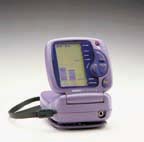
Muscle Re-education
Relaxation of muscles from muscle guarding
Pain reduction
Hemiplegia, spinal cord injury, spasticity, cerebral palsy,
facial paralysis, and incontinence
NMES
NMES (Neuromuscular Electrical Stimulation) is a therapeutic modality used to excite muscles in order to have muscle contractions. This benefits the therapists in their ability to actively encourage muscle contractions when they are needed. This can be incorporated during walking, facilitating crawling, and strengthening muscles. Below are a few common diagnosis's treated with the use of NMES:
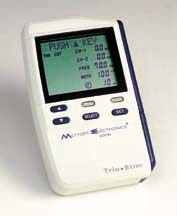
Hemiplegia
Erb's Palsy
Developmental Delay
Hypotonia
Muscle weakness & Muscle denervation
Muscular re-education
Return to the top of the page
TAPING & WRAPPING
Wrapping and taping, known as kinesio-taping, are a well known technique in pediatric rehabilitation secondary to the non-invasive approach. Taping and wrapping is utilized in providing support and facilitating body awareness to various parts of the human anatomy.
Some of the most common uses of taping is for facilitating awareness through tactile, skin, stimulation throughout the day with the use of kinesio-tape. This tape is applied in various patterns specific for what the therapist feels a child needs. Similar to the use of tape is the use of ace bandages to wrap certain joints and or extremities in order to increase normal motion from the muscles.
Various techniques are use in order to obtain the correct motion determined by your physical or occupational therapist. For more information on kinesio-taping please visit the link below:
Kinesio Taping Home Page
Return to the top of the page
FITNESS & WELLNESS PROGRAMS
Fitness and wellness programs benefit any age child, girl or boy, and no matter what condition they may or may not have. The main benefit of fitness and wellness programs is that they will achieve a healthier lifestyle for the child. Increase in blood flow, fatigue reduction, strength improvements, endurance increases, and weight loss are some of the reasons for development of a program for your child. Fitness programs include everything listed below:
- Development of individualized home programs for family and child interaction
- Home programs consist of illustrations and step by step instructions
- Development of custom fitness program specialized for child and parent goals
- One on one training by professional, licensed physical therapist to obtain fitness goals.
- Consulting for family and children through e-mail, phone, and fax.
Return to the top of the page
SPLINTING & CASTING
Splinting & casting are a variety of techniques utilized in physical therapy to decrease tone and increase flexibility of muscles. Serial Casting is a technique used for increasing range of motion of a joint over a series of casts that continually increase motion. This technique is utilized for children with diagnosis's of cerebral palsy, club foot, and various other disorders decreasing rang of motion of a joint.
Splinting is used to increase and prevent the loss of range of motion in joints. Splinting is done by either a professional PT, OT, or certified orthotist. Splinting is done by molding specially manufactured plastics into a form that adds support to an arm or leg. Splinting is an excellent technique used in infants secondary to the rapid growth that occurs.
 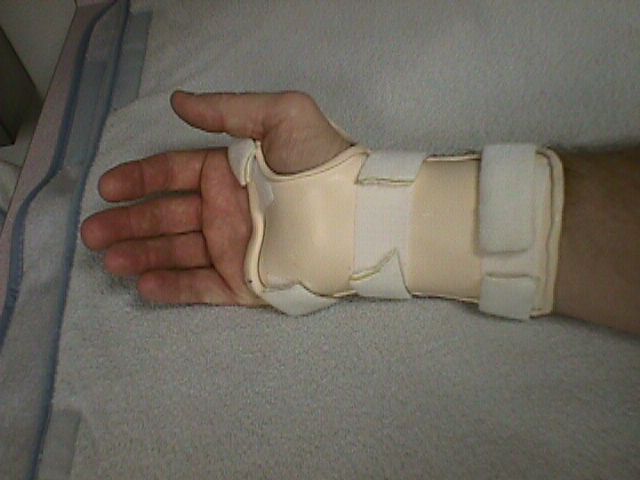 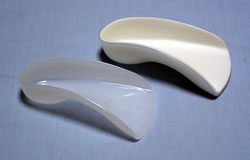
 
Return to the top of the page
Click on a link below to travel to a different PPT Department
Pediatrics | Personal Injury | Industrial & Ergonomic
Pediatric Physical Therapy | Home Health Care | FitnessPrograms | Biofeedback/NMES Treatment
Casting/splinting/orthotic referrals | Hippotherapy | Orthopedic & Muscular | Neurological
NDT | Biofeedback/NMES | Taping & Wrapping | Fitness & Wellness | Splinting/Casting
Zero months to six months | Six months to one year | One year to two years | Two years to five years
Five years to ten years | Ten years to eighteen years | Infant Massage | Infant Ball Exercise
Pediatric Exercises | Yoga | Tip of the Month | Doctor's Info | News & Presentations | Links
©2010 Prevention Physical Therapy. All Rights Reserved. |









